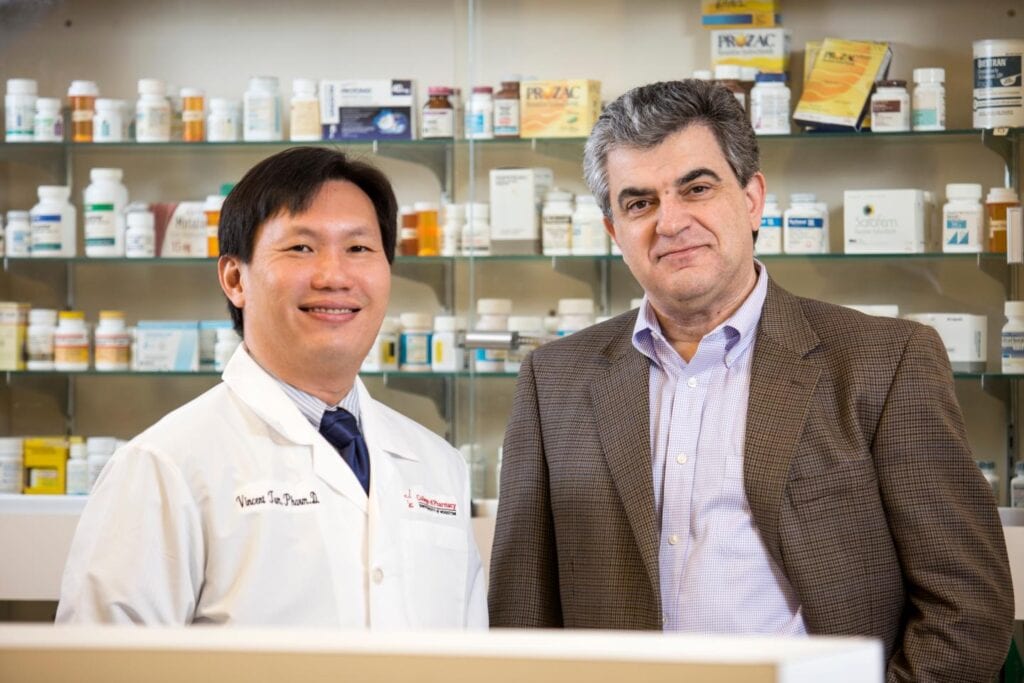A pair of University of Houston professors and longtime collaborators recently received a $519,000 grant from the National Institutes of Health to further their work combating drug-resistant bacteria.
Chemical and biomolecular engineering professor Mike Nikolaou and clinical sciences pharmacy professor Vincent Tam produced a patented equation to assess the effects of antibiotics on bacteria. By the end of 2015, the researchers anticipate developing the first working prototype of a methodology and associated software that improves the process of determining effective antibiotic cocktails for patients in clinical settings, as well as expedites the development and approval of new antibiotics.
“This is a race of humans developing antibiotics against nature’s evolving bacteria,” Nikolaou said. “It’s very difficult to win that race because bacteria evolve fairly rapidly.”
Nikolaou says the process of antibiotic development and approval is painstaking. Discovering a bacteria-killing molecule that is safe and effective for patients can easily take a decade. Nikolaou and Tam’s work can more efficiently analyze data to find drug combinations that are both effective against bacteria and safe for patients.
“Single antibiotics are becoming less and less effective against bacteria, so very frequently you have to use combinations of antibiotics,” Nikolaou said. “In recent years, we’ve been using more combinations of antibiotics so that we can have a combined effect that can make the antibiotics more potent and perhaps kill bacteria that would otherwise be resistant.”
Navigating Interactions Between Antibiotics
Numerous possibilities for interactions between antibiotics exist. An example of an interaction might involve one antibiotic opening pores in bacterial cell walls so another antibiotic might easily enter to do the killing, Nikolaou said.
“Physicians are presented with the challenge of considering overwhelming permutations of antibiotic combinations and dosing regimens for patients,” Tam said. “Time restrictions necessitate eyeballing results and making best guesses about treatments based on their expertise and intuition.”
With time being extremely precious to both doctors and patients, Nikolaou and Tam are working to optimize the process by reducing the amount of time and guesswork needed to assess which drug combinations are the most effective at killing bacteria.
“Our approach is empirical, so it relies on experimental data rather than detailed prior knowledge,” Nikolaou said. “This way, you don’t need to know the type of bacteria, the type of killing mechanism or the mechanism of resistance.”
Predicting the Course of Bacteria Populations
Nikolaou and his team of students composed their basic mathematical model based on Tam’s observations of the effects of antibiotics on bacteria populations over time. Through better use of collected data, their equations predict the course of bacteria populations in realistic situations reasonably well.
“The equations do not define logic,” Nikolaou said. “Instead, they augment logic and intuition more accurately.”
The professors plan to use existing image analysis technology to automatically record the effects of various antibiotic cocktails on bacteria. A laser detector modified for their purposes can feed the data to computer software the team is in the process of developing that runs the patented mathematical model.
“The user will simply have to push the button, and the software will do the calculations that guide the doctor on what antibiotic or combination of antibiotics to use,” Nikolaou said.
Automating Imagery Analysis
Automation provides opportunities to collect additional data at more frequent intervals. The detector can record data every hour, for example, rather than once at the end of a 24-hour time period. Instead of plotting two points on a graph, the software can plot 24 or more and create an entire curve that helps to more accurately predict outcomes beyond 24 hours. Furthermore, longitudinal analysis can provide more precise information, such as the extent and the rate of decline of bacteria populations.
The software also can account for differences between patients and test tubes. Concentrations of antibiotics decline over time in patients while they remain fixed in test tubes. In the field of antibiotics development, test tube research is often followed by tests conducted with elaborate systems that attempt to mimic the ways antibiotics are eliminated by the human body.
“By doing this, we’ll be gaining efficiency,” Tam said. “And, ideally, that would eliminate the need for physicians to run excessive numbers of tests in a clinical setting.”


